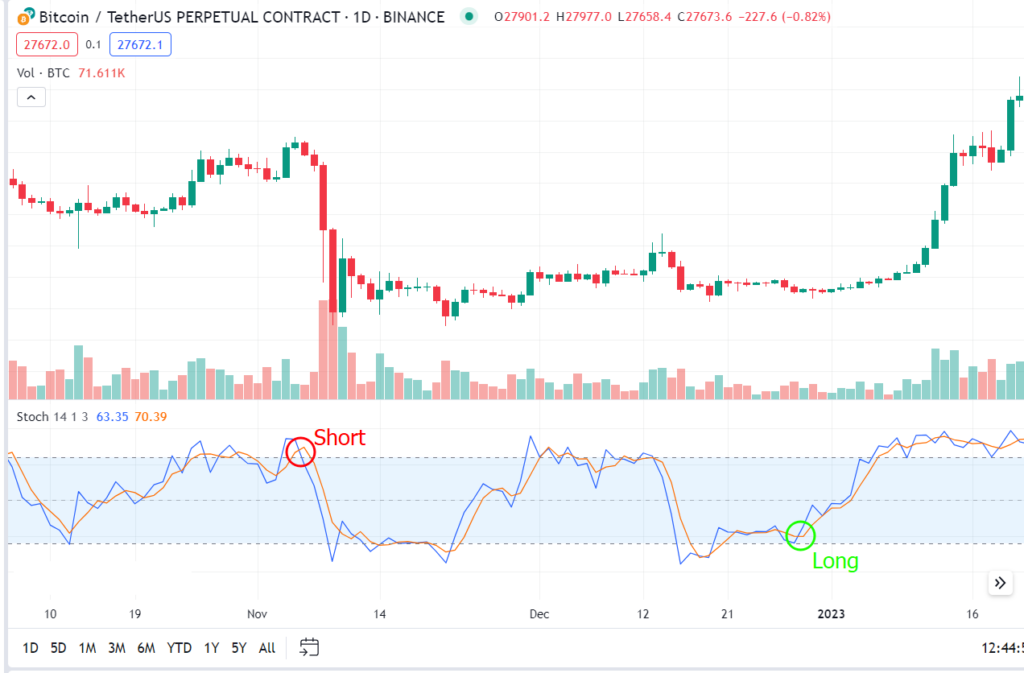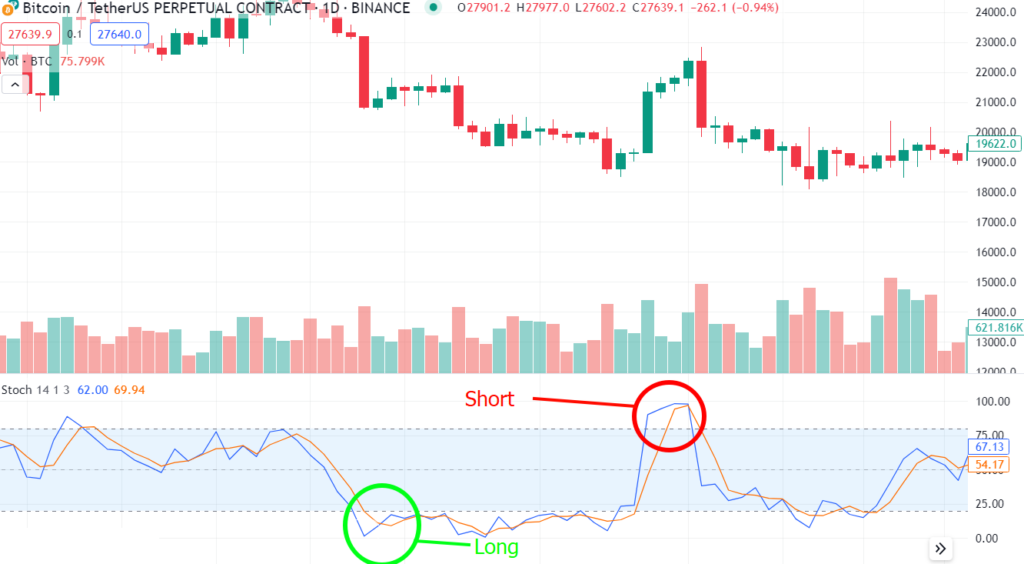Stochastic is an oscillator that shows how quickly the price of an asset changes and how much it deviates from its average values for a certain period in the past. It consists of two lines:
- Fast %K (this is the ratio of the current closing price to the price range for the selected period)
- Slow %D (this is the moving average of %K for the selected period)
There are two types of Stochastics in the Veles platform – fast and slow.
Fast Stochastics for K calculations uses 5 periods and is more volatile, more sensitive to price changes.

Slow Stochastic for K calculations uses 14 periods according to the formula of fast stochastics, and also softens the fluctuations of the fast stochastic by applying a moving average to %K to reduce noise. This creates a smoother curve and makes the slow stochastic less prone to false signals, which is often preferred for longer term positions.

There are two different filters based on each of these stochastics:
1. The “lines crossing” is the intersection of lines K and D.
When the K line crosses the D line from top to bottom, it is considered that this is a signal for sale (opening a Short deal or closing a Long deal).
When the K line crosses the D line from bottom to top, this is a buy signal (opening a deal in Long or closing a deal in Short).

2. “Levels” is the exit of both indicator lines from overbought/oversold zones.
When both lines K and D cross the oversold boundary (20) from the bottom up, this is a buy signal (opening a trade in Long or closing a trade in Short).
When both lines K and D cross the overbought boundary from top to bottom, this is a sell signal (opening a Short trade or closing a Long trade).

It is important to remember that stochastic is not a universal indicator that can give accurate signals in all markets and in all situations. It can give false signals, especially during periods of low volatility. Therefore, before using Stochastic in trading, it is recommended to study its features and test it on historical data.






